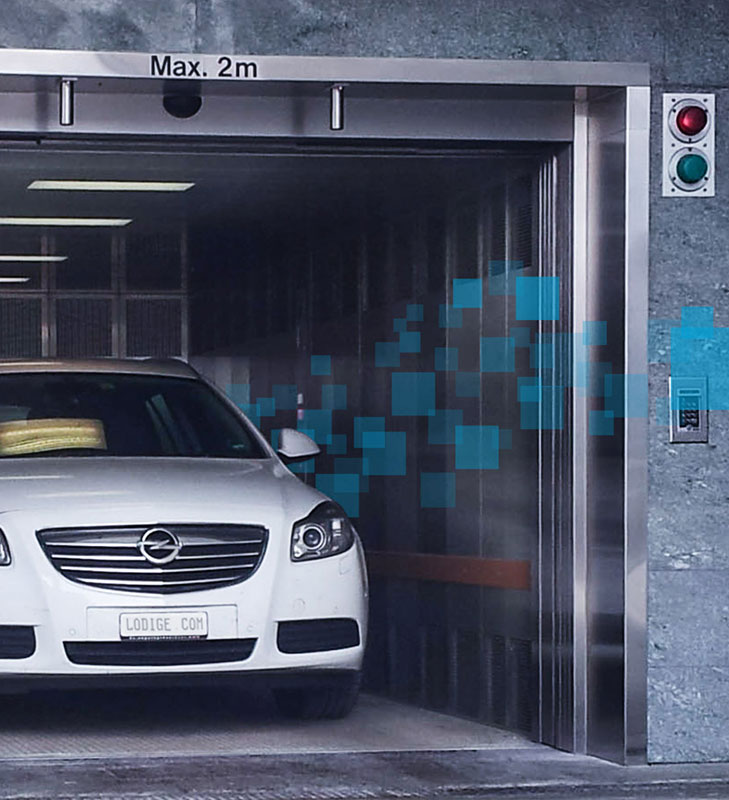As a special vertical transportation equipment, the daily maintenance and care of car elevators are essential to ensure the safety, stability and long-term operation of the equipment. Regular inspection and maintenance can not only extend the service life of the elevator, but also avoid safety accidents caused by equipment failure. The following are specific steps and suggestions for daily maintenance and care of car elevators:
Daily inspection is the first step to ensure the normal operation of car elevators, which usually includes the following aspects:
Check whether the control panel of the elevator is working properly, and ensure that the buttons, display screens, indicator lights and other functions are complete and responsive. Any abnormal display or button failure needs to be checked in time.
Ensure that the elevator door can be opened and closed smoothly without jamming or lax closure. Whether the door sensor is working properly and whether it can sense obstacles in time to avoid clamping or personal injury.
Check whether the elevator platform is level and whether the platform is tilted, sinking or unevenly rising. If the platform is found to be unstable or offset, it should be adjusted or repaired.
Regularly check whether the electrical circuits, junction boxes, motor controllers, etc. are aging, loose or short-circuited, especially in humid environments. Ensure that the electrical system is in good working condition.
Check whether the drive device, such as the hydraulic pump, steel cable, roller and other components, is running smoothly and whether there is any abnormal noise or vibration. Especially for the steel cable drive system, check whether the steel cable has signs of wear, deformation or breakage.
Monthly inspection is to ensure the health of the car elevator equipment in long-term use, and usually some relatively more in-depth details need to be checked:
If the elevator is hydraulically driven, it is necessary to check the level and quality of the hydraulic oil to ensure that the hydraulic oil is not contaminated and the oil level is sufficient. If there is oil leakage in the hydraulic system, it must be repaired in time.
For steel cable driven car elevators, it is necessary to regularly check the wear of the steel cable to check whether there are cracks, broken wires or uneven wear. Check the wear of the wheel to ensure that it runs smoothly and without abnormal noise.

Check whether the structure of the platform is damaged or deformed. In particular, check whether the surface of the platform has cracks, wear or corrosion to ensure that it is intact.
The braking system is the key to the safe operation of the car elevator. Check whether the braking system can work normally, whether the brake pads are severely worn, and whether the sensitivity of the braking device is qualified.
Lubricate the moving parts of the elevator (such as guide rails, rollers, chains, etc.) regularly to ensure smooth operation and reduce friction and wear. Use appropriate lubricants and greases to prevent component damage caused by poor lubrication.
Quarterly inspections focus on some more professional inspection items, which usually require professional technicians to perform:
Comprehensive inspection of the elevator's electrical system, including the insulation, grounding system, overload protection device, etc. of the electric control cabinet, motor, distribution box, etc., to check whether the electrical system meets safety standards.
Check whether the counterweight and guide rails are operating normally to ensure that the elevator platform rises and falls smoothly without any swinging or irregular movement.
Check all safety devices of the elevator, including overload protection devices, limit switches, emergency stop devices, devices to prevent the car from sliding, etc. Ensure that these safety systems can function quickly in the event of a failure.
For hydraulically driven car elevators, it is necessary to replace the hydraulic oil or check the hydraulic oil filtration system to ensure that the oil is clean and avoid the hydraulic system from being affected by oil pollution.
Annual inspection is the time to conduct a comprehensive inspection of the car elevator. The inspection content usually includes:
A comprehensive inspection of all mechanical and electrical components of the elevator, including motors, hydraulic systems, steel cables, platforms, guide rails, brakes, etc. Use professional testing equipment to check the load capacity, lifting stability and other indicators of the elevator to ensure that they meet the design requirements.
Check whether the structure of the elevator is deformed, cracked or corroded, especially the steel structure. Any structural problems may affect the safety of the elevator and must be dealt with in time.
Conduct electrical insulation tests to ensure that the insulation of the elevator electrical system is good and there are no safety hazards.
Through the analysis of the elevator operation data, understand the operation status of the elevator in the past year, evaluate the operating efficiency, energy consumption and failure rate of the equipment, and determine whether large-scale repairs or upgrades are needed.
During daily use, if there is a fault or abnormality, it must be immediately checked and handled. Common faults include:
Check whether the electrical control system, hydraulic system, drive device, etc. are normal, whether there is a power outage or hydraulic oil leakage.
Check whether the mechanical structure of the elevator platform is deformed or loose, and whether there is an abnormality in the transmission system.
Check whether the brake is stuck, whether the brake pad is excessively worn, and whether the hydraulic oil of the brake system is sufficient.
Check whether there is any abnormal noise when the elevator is running, which may be caused by loose cables, worn wheels, poor lubrication, etc.
The daily maintenance and care of car elevators is a systematic project, covering multiple levels from daily inspections to in-depth maintenance. Regular inspections and maintenance can not only ensure the long-term stable operation of the equipment, but also effectively prevent failures and improve safety. Through reasonable maintenance plans and professional technical support, the service life of the elevator can be maximized to ensure that it provides services to users efficiently and safely.











